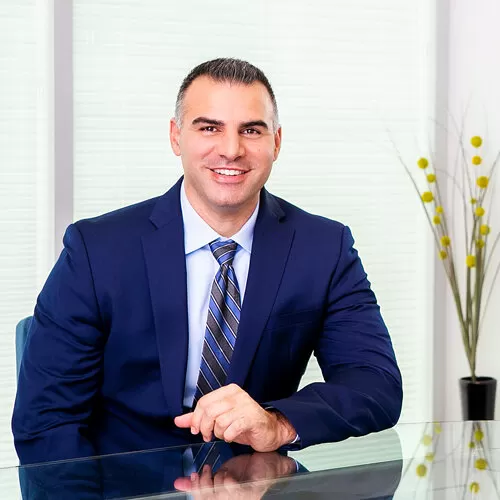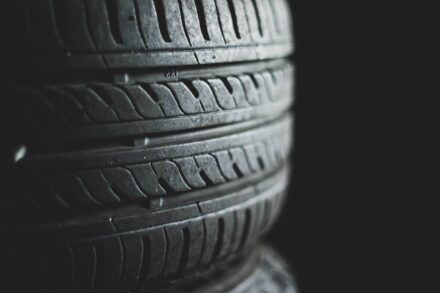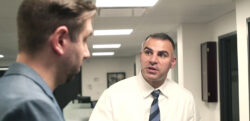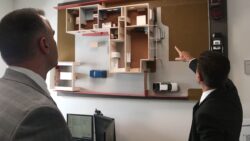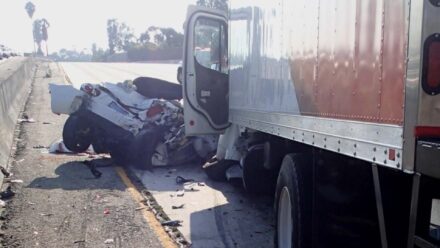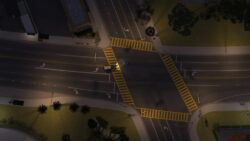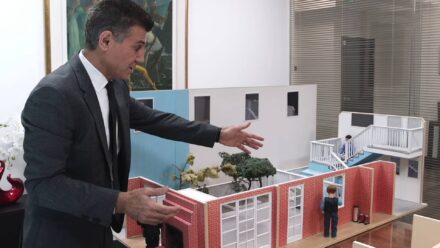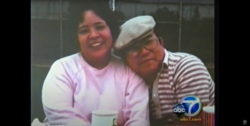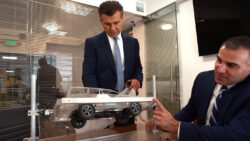“I felt like I was on a team again; I knew that, no matter what happened, I could trust Garo.”
On July 14th, 2012, Amir “Nick” Ekbatani was travelling along the Pacific Coast Highway when a taxi driver failed to yield at an intersection and collided with him. Amir was thrown from his motorcycle, causing catastrophic injuries. Despite numerous surgeries, his leg had to be amputated below the knee, radically altering his life and livelihood forever.
It was then that Garo and Lawrence stepped in. They recovered a multi-million dollar award for Amir on the grounds that the California Dept of Transportation (CalTrans) were fully aware of the dangers of the intersection, yet failed to implement the changes that would have made it safer.
Meet Amir Ekbatani
“Nick plans to do more with one leg than he ever could have done with two.”
Amir Ekbatani was and remains an athlete to his core. Between 2006 and 2009 he was an offensive lineman for the UCLA Bruins, where he was presented with two game balls for victories against University of Washington and University of Tennessee. After graduating he worked for ESPN and Nike. Prior to his accident, he had taken up boxing and began training to become a fitness instructor.
Simply put, he was a star.
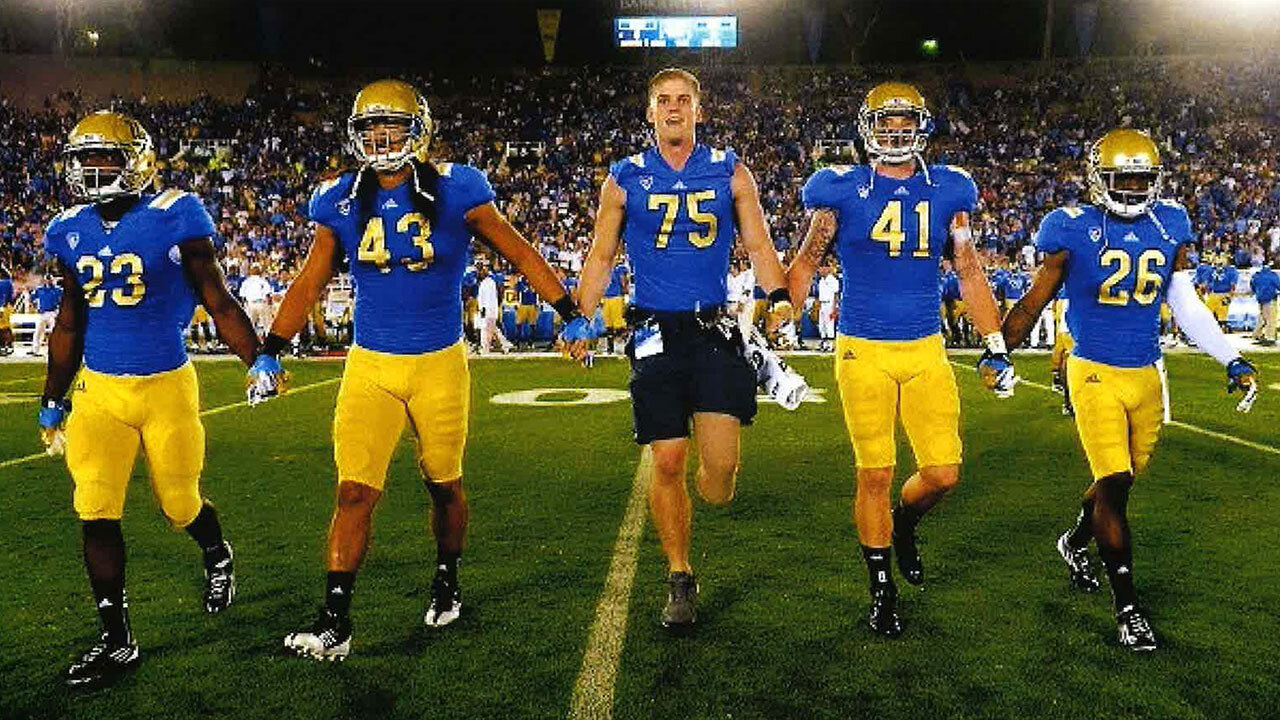
“I didn’t want to accept the fact that I wouldn’t be able to be an athlete or move like I used to. I think that’s what’s helped me heal”
— Amir speaking with People in 2017
Following his accident, Amir is more driven than ever. As a motivational speaker, adaptive athlete and Apple Fitness+ trainer, he spends his days inspiring people with his positivity and enthusiasm.
Things didn’t always look this hopeful though. As we discuss in more detail below, the impact of the accident on Amir’s life was dramatic, and the subsequent years were incredibly tough for him and those around him.
While the outcome was ultimately one of positivity, there were many times when it looked like this catastrophic event would impair Amir’s mental and physical world forever.
The Collision
“It was severed at the seams. I don’t have much recollection of it, but I remember waking up in a hospital bed and being told that my leg had been amputated.”
Amir was travelling north on PCH when the taxi driver made the left turn onto Diamond St. in front of him. This particular intersection was notoriously dangerous, and by the time the taxi driver noticed Amir, it was already too late.
The front left bumper of the oncoming vehicle caught Amir’s leg, throwing him from his motorcycle. He suffered severe trauma that almost proved fatal.
His lower left leg was totally destroyed, and doctors had no choice but to amputate below the knee.
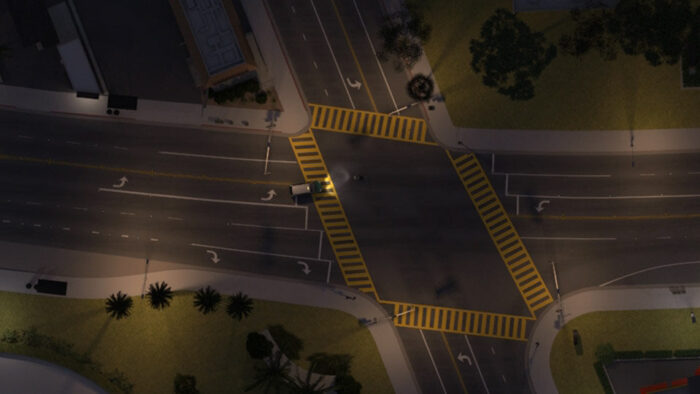
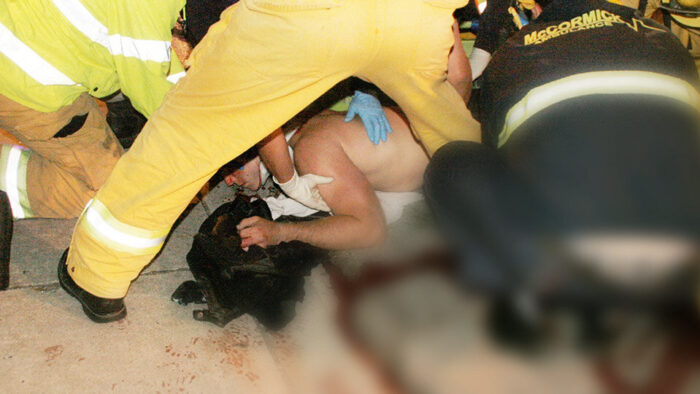
A reconstruction of the moments before the collision
Institutional Indifference
Although the taxi driver was partially to blame for the collision, there was something much more insidious going on beneath the surface.
In examining the intersection, our firm realized that this went far deeper than one taxi driver’s error: there was a major design flaw in the roadway. An incline significantly restricted the line of sight of oncoming traffic, to the point where one citizen had described it by saying “you take your life in your hands every time you turn at that intersection.”
CalTrans were aware of this; they had ordered double-double yellow lines be painted at the intersection in 2005 to prevent early left turns. They never followed through to correct it.
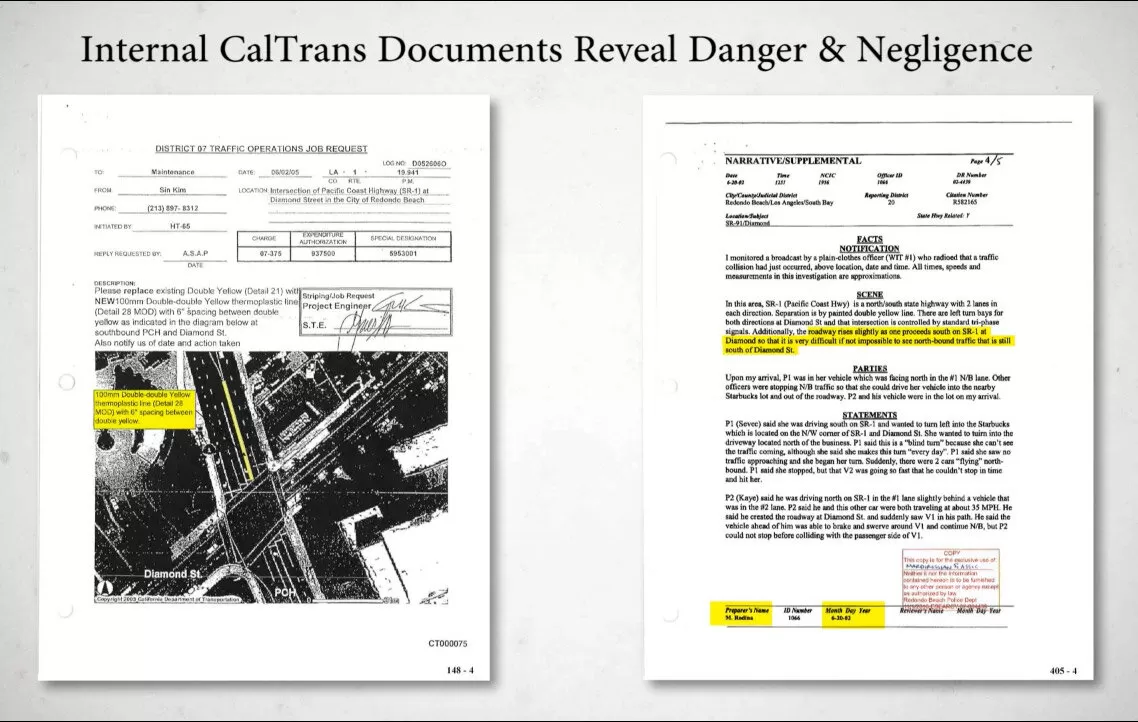
This was not the first time an incident had occurred at this very intersection. To take one example, in 2005, Kenneth Campa collided with an oncoming SUV whilst trying to make a left turn. He stated that had he seen the vehicle, he would not have made the turn, and noted on a return visit to the intersection that the steep incline had blocked his field of view, contributing to the collision. Campa went on to testify at Amir’s trial against CalTrans.
In delivering his opening statement at trial, Garo pointed out that:
CalTrans has a duty to correct conditions that cause safety concerns to motorists that use CalTrans roads. If Caltrans fails to perform this duty and an individual is injured, then CalTrans is responsible for all harms and losses. That’s the rule.
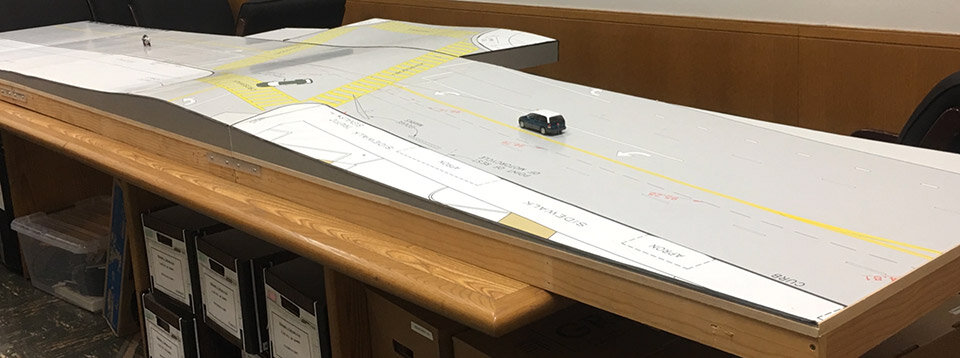
Garo went on to point out that skewed intersections such as this one (wherein the degree of intersection is not 90), as per CalTrans’ own admission, are considered suboptimal: they are not safe. Extra precautions must be implemented, especially at intersections such as this one where the skew is particularly severe, so that motorists can negotiate them without putting themselves or others in danger.
This accident could have been prevented had a left-turn signal been in place, because a red light would have stopped the taxi driver from making his turn while Amir was proceeding on a green light.
Other measures might have included the striping of a double double to form a simulated median on the pavement, that would have forced the taxi driver and others to drive further toward the center of the intersection before turning left. That measure would have given Amir the extra time he needed to get through the intersection before the taxi smashed into his leg.
This is what CalTrans could have prevented. This is what CalTrans is responsible for.
Join us on YouTube for More Videos
Business As Usual
“Here we are, 11 years after they were notified of this dangerous condition, and that fix has still not been implemented.”
— Garo Mardirossian speaking to KCAL9 in 2017
Engineers had noticed the dangerous lack of visibility at the intersection, and had requested measures be implemented to make it less hazardous in 2005 (the same year as Campa’s accident). However, they failed to pursue the corrections, even in spite of passing through the intersection repeatedly in the years between when the work order was first raised, and the night Amir lost his leg.
When questioned as to why nothing had been done since these corrections had been requested, the engineers merely stated that they thought that the work was underway, and that this was business as usual. They did not seem surprised or concerned that in eleven years, nothing had been done to carry out their recommendations to improve the safety of the intersection.
It was negligence on the part of CalTrans that prevented simple safety measures from being implemented, measures that would have significantly reduced the chance of the collision that ultimately cost Amir his leg.
The Rebuttal
Opposing counsel vehemently maintained that the intersection was not dangerous, claiming to have seen relatively few accidents over the long-term. Instead, they attempted to pin the blame solely on the taxi driver.
“We are here because the taxi driver caused this accident,” the defense attorney said. “He cut the corner and caused Mr. Ekbatani’s injuries. He was familiar with the intersection because he made a left turn there hundreds of times before. But this time he did not take the proper precautions. He never hit his brakes, he never stopped.”
However, we contested that the intersection was in fact dangerous, and that CalTrans were the ones directly responsible for the conditions that made it dangerous.
The definition of a “Dangerous Condition”, as per CACI No. 1102 (Gov. Code, § 830(a)), is:
A condition of public property that creates a substantial risk of injury to members of the general public when the property is used with reasonable care and in a reasonably foreseeable manner.
In order to show that they were not responsible for creating the conditions that led to Amir’s catastrophic injuries, CalTrans essentially had to prove three things:
-
There was no dangerous condition
-
If there was a dangerous condition, they did not have enough notice to correct it
-
If there was a dangerous condition, they did not create it
We have already discussed how the extreme skew and sharp incline made this intersection particularly dangerous. We have also discussed how CalTrans had been aware of this danger for over 11 years, having received multiple citizen complaints in conjunction with the work order that was submitted in 2005.
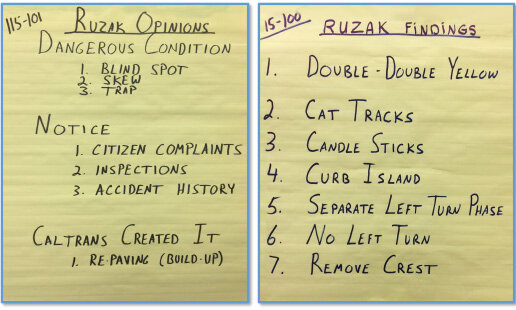
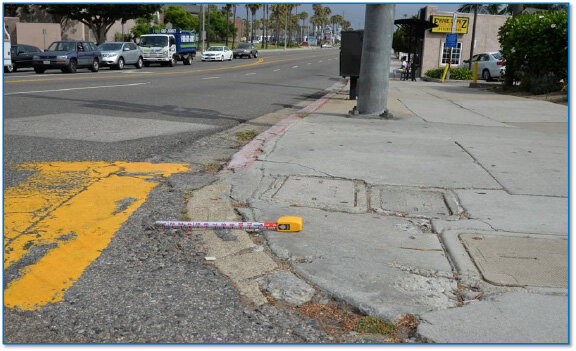
The traffic engineer went further to cite that CalTrans were in fact responsible for creating the dangerous condition by re-paving the intersection; a process that raised the incline by an inch every time it was carried out. This restricted sight distance eliminates the ability of left turning southbound motorists to accurately perceive and react to northbound vehicles, and the sag in the roadway gives drivers a false sense of security that there is no oncoming northbound traffic.
With these factors in consideration, we were able to prove that:
-
There was without a doubt a dangerous condition
-
CalTrans were aware of that dangerous condition and had ample time (over a decade) to correct it
-
CalTrans had directly contributed to the creation of that dangerous condition
Furthermore, CalTrans were unable to prove that their actions/omissions in creating the dangerous condition were reasonable, nor did the practical cost of implementing the fixes outweigh the likelihood of potential serious injury.
The Impact on Amir
“Just imagine, this was an elite athlete who now all of a sudden has become a burden on others.”
The impact of the accident on Amir’s life was truly profound. First, there was the fact that the collision was very nearly fatal — he was given a 2% chance of survival. That he managed to pull through was testament to the shape he was in: Amir has speculated that, had he not lost the significant amount of weight that he done in between graduating UCLA and the accident, he may not be alive today.
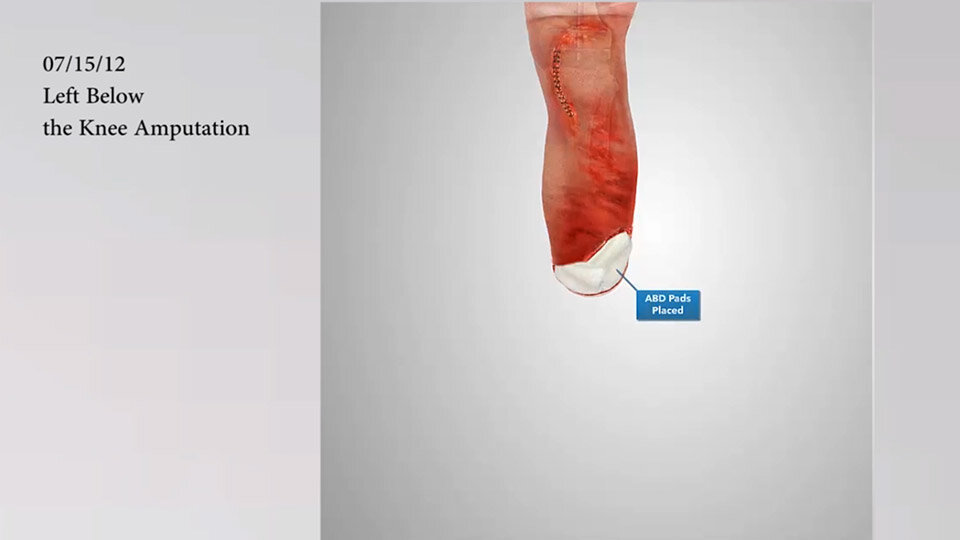
Amir went through a total of 14 surgeries between 2012 and 2016. These included procedures to save his left femur, to formalise and revise the amputation below his left knee, bone grafts, osteotomies, and surgical excisions to correct for skin eruptions around the back of his knee.
Ekbatani was once a master of his body, but now has to devote three hours a day to dealing with his prothesis
To list the full range of factors contributing to the life-changing impact of the accident on Amir’s life and livelihood would be impossible. Here are a select few:
-
significant pain following surgeries, in the left hip, and in the amputated region
-
phantom limb pain, accompanied by nightmares that his foot is on fire
-
major personality changes: depression, hopelessness, panic attacks
-
grief at the loss of his limb and fear of further amputation
-
major identity changes: no longer an elite athlete, no longer able to compete as before
-
significant disruption to former routine and reliance on others to assist with daily life
Fortunately, we are happy to share that in spite of this initially bleak prognosis, in 2021 Amir is thriving as an inspiration to so many people all over the world. His positive outlook and ability to adapt to a radically different lifestyle is a true testament to his athletic spirit, and we are proud to think of him not only as a client, but as a part of the Mardirossian Akaragian family.
Saving Lives & Legs
“Within 6 months after our verdict, they put a double double there, and it’s been saving lives and legs since”
— Garo Mardirossian
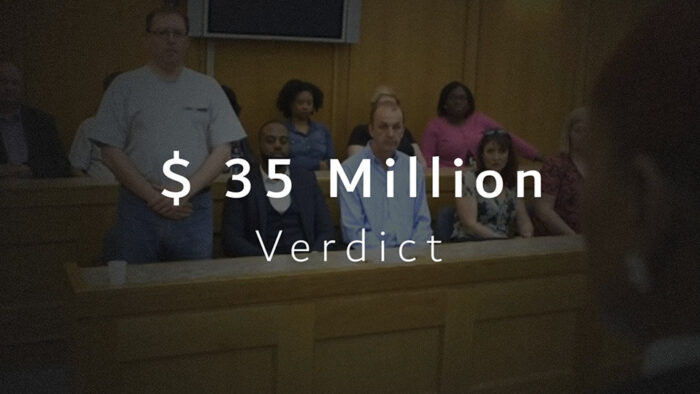
Our firm was able to prove that CalTrans knew how dangerous this intersection was, but did nothing to implement the fixes that would have made it safer. Their negligence in failing to correct these safety issues cost Amir his leg and almost his life.
Through our signature use of multimedia exposition, we were able to demonstrate the facts of this case at an unparalleled level of detail and nuance. We showed the defense that we were ready to win.
And we did.
After a trial that lasted 6 weeks, a jury made the decision to award a figure of $35 million in damages for Amir: a figure over 3 times the amount of $9,778,471 calculated for his net lost earning capacity plus future life care plan expenses. We were able to provide this outstanding result for Amir and for the citizens of Los Angeles because of our tireless, unrelenting drive to uncover the truth and deliver justice.
Since our victory at trial, CalTrans have implemented a double double yellow, a painted medium that prevents early left turns, significantly improving the safety of the intersection.
“It stands as a big symbolic victory, but mostly, I’m just excited to know that my losses weren’t made in vain.”
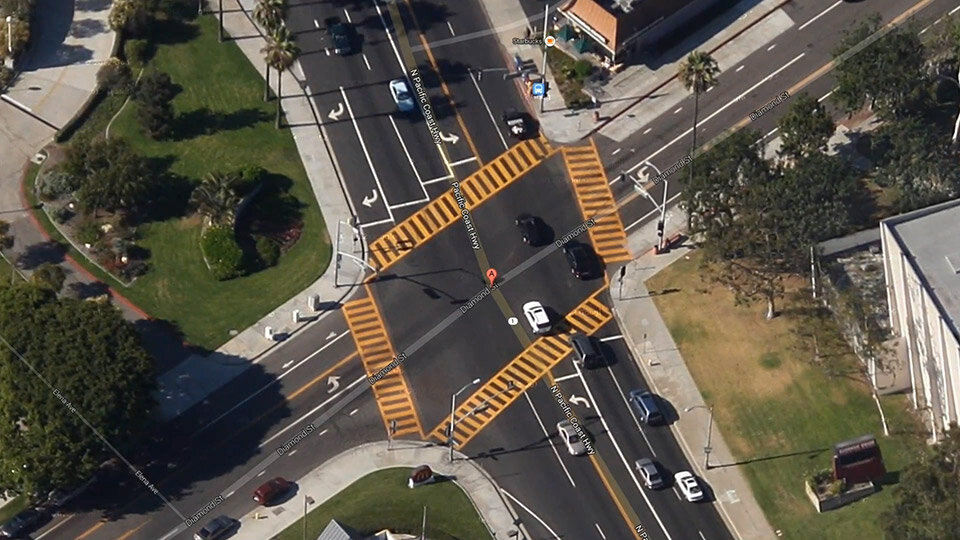
We are committed to bringing justice to the streets of Los Angeles. Our involvement in this case held an indifferent departmental body to account for failing to properly consider the safety of the citizens using its roads, and a once notorious intersection is now much safer as a result.
Our primary goal is to facilitate a better life for the people we serve. While for some people life will never be the same again, we strive to secure a future for them that helps make up for, insofar as possible, the catastrophic and tragic experience he or she may have suffered. We are passionate about the people we represent, and everything we do, we do in service of bringing justice to those who have been traumatically affected due the lack of care by others.
Our Lawyers Are Dedicated To Helping Those Who Have Been Catastrophically Injured
Contact Mardirossian Akaragian LLP Today
Our firm offers exceptional talent, abundant resources, tireless dedication, and years of experience to give you the best chance of success in obtaining maximum compensation. Led by our award-winning founding attorney, Garo Mardirossian, we are prepared to provide you with aggressive representation and personalized legal guidance you need.
Talk to a Los Angeles personal injury lawyer about your case or contact our firm to schedule a no-cost consultation.
Schedule Your Free Catastrophic Injury Case Evaluation
ARTICLE BY
ARMEN AKARAGIAN
Admitted to practice in 2006, Armen has arbitrated, tried, and settled several cases which have resulted in multi-million dollar verdicts and settlements.
Sources cited in this article:
- “Nick Ekbatani” – Swim With Mike
- “UCLA 2009 Football Roster – Nick Ekbatani“ – UCLA Bruins
- “Ex-UCLA Football Player Asking for $50 Million in Redondo Beach Crash“ – Patch
- “Athlete Who Lost Leg in a Motorcycle Accident Loves Teaching Cycling Classes“ – People
- “Trainer Preview – Amir Ekbatani“ – Apple Fitness+
- “Caltrans ordered to pay ex-UCLA football player $35M in crash lawsuit” – ABC7
- “Witness involved in crash at same Redondo Beach intersection testifies in Nick Ekbatani lawsuit“ – Daily Breeze
- “Garo Mardirossian Opening Statement” – LexisNexis
- “Jury Orders Caltrans To Pay Ex-UCLA Lineman $27.5M” – CBS Los Angeles
- “CACI No. 1102. Definition of “Dangerous Condition” (Gov. Code, § 830(a))” – Justia
- “Nick Ekbatani Returns to the Rose Bowl” – UCLA (YouTube)
- “Phantom limb” – Wikipedia
